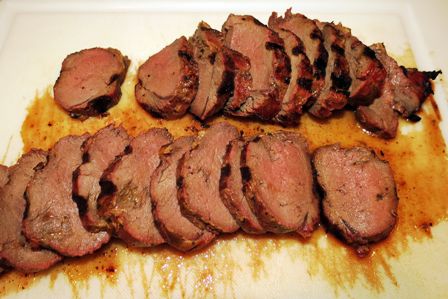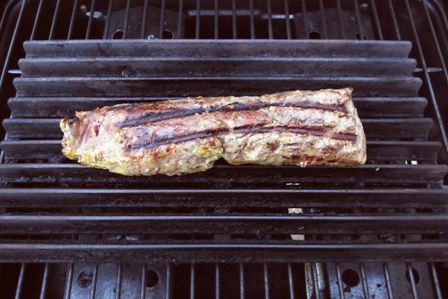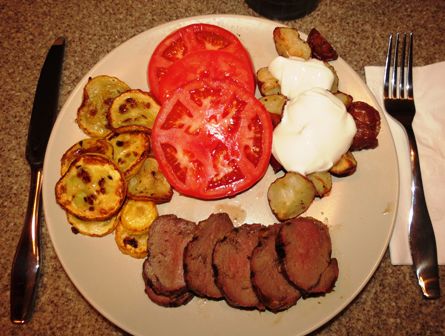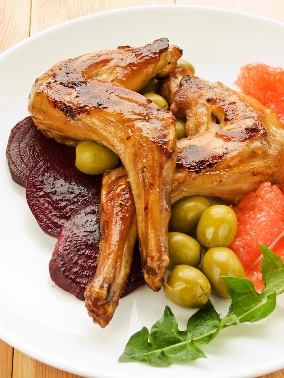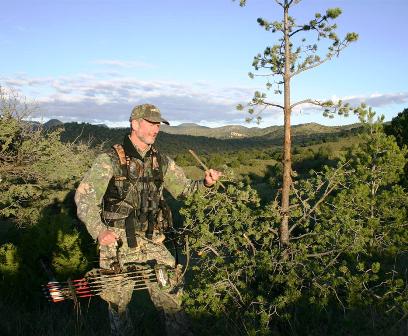Reviewed by Steve Sorensen
Great sounds for deer and total confidence for hunters.
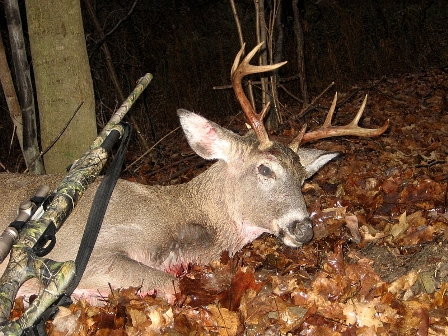
A victim of the Super-Hot Ma-Mah.
Thirty years ago, most hunters hadn’t tried calling deer. Twenty years ago most hunters owned a deer call, but few had success with them. Ten years ago, so many deer calls were on the market that hunters were confused about what to buy. Today, that confusion persists.
Many calls are effective if used properly. But I’ve found two that are not only effective, they’re practically foolproof, and they’ve worked well for me.
Jerry Peterson from Woods Wise Products has been in the callmaking business for many years. And he doesn’t just make calls, he makes sure they work.
A few years ago I was hunting in New York. I climbed a hill in the pre-dawn darkness looking for a buddy’s treestand, but I got off the trail and couldn’t find it. So, I headed straight up the hill to a spot overlooking the bench where the treestand was, figuring I’d go down and climb into the stand after first light.
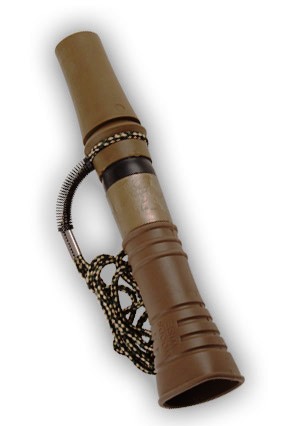
The Super-Hot Ma-Mah™ from Woods Wise Calls.
My mistake turned out to be fortuitous, because if I had blindly stumbled around looking for the stand, I’d have chased a buck out of the area. While it was still dark, I heard some crashing on the bench below me. I also heard grunting and bleating. Obviously, a buck was chasing a doe around down there, but she wouldn’t stand still for him.
As it got light, I glimpsed the doe angling up the hill below me, and about 75 yards behind her was an 8-point buck. I pulled out my Woods Wise® Super Hot Ma-Mah™ call, and gave a few estrous bleats. Even though he could see the doe he was chasing, he turned and came directly up the hill toward me. I had succeeded in calling him off the track of the estrous doe. I shot and down he went.
Do I need to say I love the Super Hot Ma-Mah™? It works. You can work it inhaling or exhaling, and you can squeeze the megaphone to manipulate the tone. It’s more compact than other calls, and I always have it with me. And it’s all rubber, so when it bumps against buttons, a gunstock or a bow, it’s silent.
I just got another call from Woods Wise®, and this one is specifically designed to bring does running. It’s the Lost Fawn Ma-Mah™, slightly smaller and pitched to create the voice of a fawn. This will be great for filling an antlerless tag. On the inhale it produces a higher, younger voice, and on the exhale an older fawn sound. For these and other calls, the Woods Wise® website has some great instructional calling videos.

The True Talker® Legacy® from Hunters Specialties.
Another great call is the True Talker® Legacy™ from Hunters Specialties®. You might be familiar with the original True Talker. That was the first call to be completely encased in rubber to dampen any unwanted sounds. I’ve used the True Talker with great results.
The True Talker® Legacy™ has several improvements over the original True Talker, but it’s still completely rubber covered, and it’s still built on the internal hardwood frame which prevents the reed from freezing up gives it a natural sound. The Legacy is easier to master, with three definite finger placements for various sounds – though it still allows you to press at any point between these spots.
The True Talker® Legacy™ works on exhale only, and it’s probably still the best call for making those deep, distinct, gutteral clicking sounds a trailing buck makes when he anticipates a doe is about ready. At the right time during the rut, that’s deadly.
These go-to calls fool deer, are easy to use, and give a hunter confidence he’s doing it right.
***
About Steve Sorensen
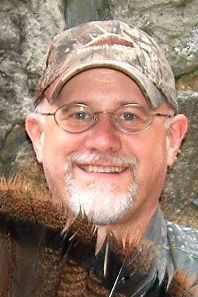 Outdoor writer and speaker Steve Sorensen writes an award-winning newspaper column called “The Everyday Hunter®”, and he regularly provides content for the Havalon Sportsman’s Post. He has also published articles in Deer & Deer Hunting, Sports Afield, and many other top magazines across the USA. Invite Steve to speak at your next sportsman’s event, and follow him at www.EverydayHunter.com.
Outdoor writer and speaker Steve Sorensen writes an award-winning newspaper column called “The Everyday Hunter®”, and he regularly provides content for the Havalon Sportsman’s Post. He has also published articles in Deer & Deer Hunting, Sports Afield, and many other top magazines across the USA. Invite Steve to speak at your next sportsman’s event, and follow him at www.EverydayHunter.com.
For more articles by Steve Sorensen, click here.
And don’t forget Havalon Piranta to skin that deer once you’ve called it in.
5,890 total views, 1 views today


